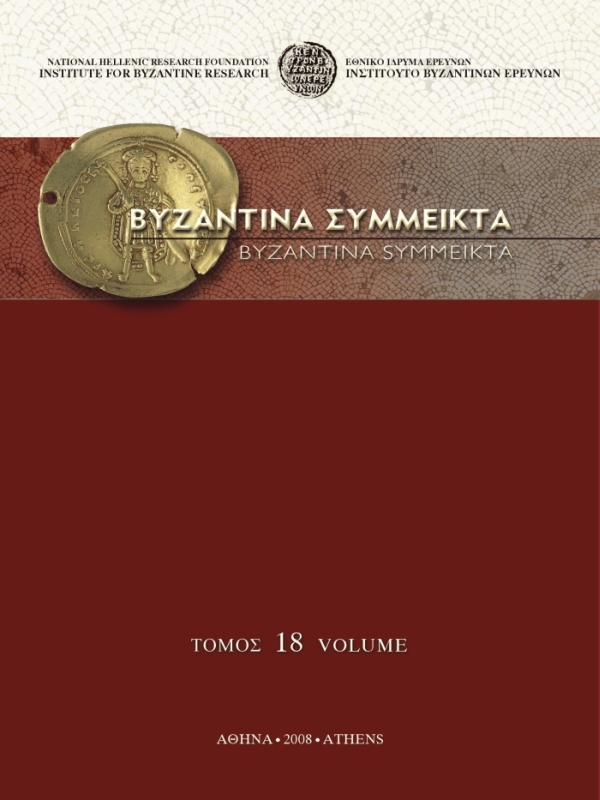Παρατηρήσεις στη μεθοδολογία και στη μελέτη της κεραμικής του 11ου-12ου αι., προοπτικές της έρευνας και επιβοηθητικά εργαλεία: Η συμβολή της χαρτογράφησης και της ανάλυσης δικτύων
Abstract
Although the interest in the study of middle Byzantine pottery started during the early years of the 20th century, it is only during the last two decades and especially since the beginning of the 21st century that a systematization of research is taking place. This either aims at the renewed typological classification of some of the established categories and at their more precise dating and at research upon their provenance, or focuses on the study of common, undecorated pottery.
The paper critically presents the current state of the research, focusing on the pottery of the 11th and 12th centuries in particular, with an emphasis on glazed wares, amphorae and cooking wares, reviews various aspects of the current state of knowledge, addresses new issues on the methodology or the interpretation of evidence and critically proposes new tools for a better exploitation of new or old data. Among these, special mention is made to the usefulness of mapping the existing evidence, with a particular comment on specific efforts. Additionally, the advantages of the application of network analysis to material of Byzantine pottery are also explored.
Article Details
- How to Cite
-
ΓΙΑΓΚΑΚΗ Α. Γ. (2015). Παρατηρήσεις στη μεθοδολογία και στη μελέτη της κεραμικής του 11ου-12ου αι., προοπτικές της έρευνας και επιβοηθητικά εργαλεία: Η συμβολή της χαρτογράφησης και της ανάλυσης δικτύων. Byzantina Symmeikta, 25, 155–209. https://doi.org/10.12681/byzsym.1208
- Issue
- BYZANTINA SYMMEIKTA 25
- Section
- Articles

This work is licensed under a Creative Commons Attribution-NonCommercial-ShareAlike 4.0 International License.
Copyright: The copyright for articles in this journal is retained by the author(s), with first publication rights granted to the journal. By virtue of their appearance in this open access journal, articles are free to use (with the exception of the non-granted right to make derivative works) with proper attribution for non-commercial uses (licence Creative Commons 4.0). NHRF retains the worldwide right to reproduce, display, distribute, and use articles published in BYZANTINA SYMMEIKTA in all formats and media, either separately or as part of collective works for the full term of copyright. This includes but is not limited to the right to publish articles in an issue of the Journal, copy and distribute individual reprints of the articles, authorize reproduction of articles in their entirety in another NHRF publication, and authorize reproduction and distribution of articles or abstracts thereof by means of computerized retrieval systems.




